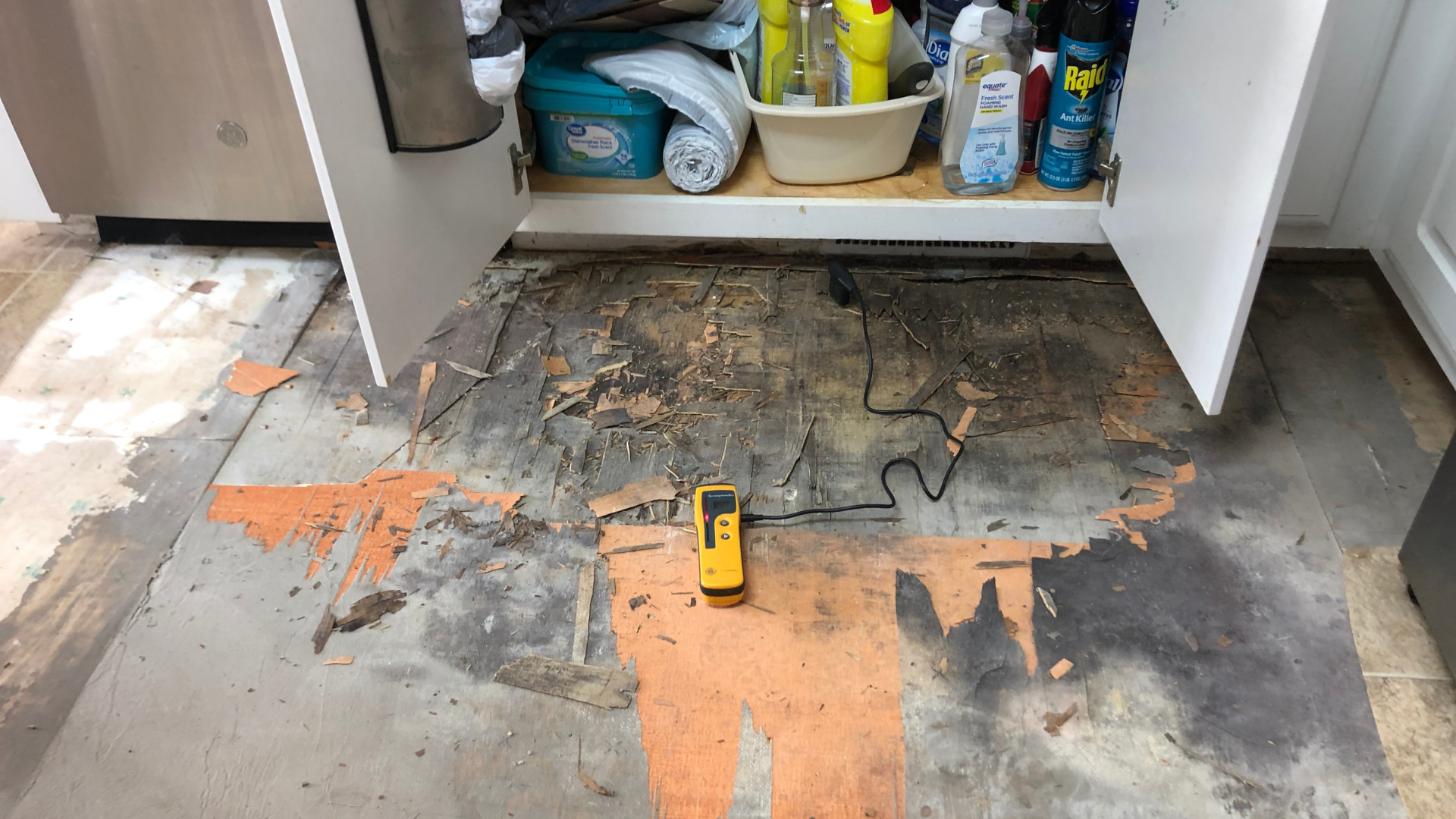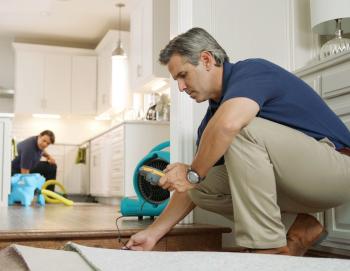Water Damage Restoration 101: Understanding the Process and Expense
Water damage can strike suddenly, leaving house owners in a state of complication. Recognizing the reconstruction process is crucial for reliable recovery. From reviewing the damage to choosing the right company, each step affects the overall result and cost. Variables such as the sort of water damage and necessity additionally play a substantial role. What are the details strategies used in repair, and just how can one prepare for potential costs?
Kinds Of Water Damage

Preliminary Analysis and Examination

Water Removal Methods
Following the first assessment, reliable water extraction strategies are employed to mitigate damage and protect against more problems. These methods entail using specific devices such as industrial-grade vacuum cleaners and completely submersible pumps - Water Damage Restoration. The selection of approach relies on the quantity of water existing and the kind of materials impacted. For standing water, submersible pumps are generally made use of for fast elimination, while vacuum cleaners are excellent for extracting water from carpetings and furniture. Furthermore, progressed techniques like water removal floor coverings might be utilized for hard-to-reach areas - Water Damage Restoration. The goal is to eliminate as much water as feasible, reducing the possibility for mold and mildew development and architectural damage. Trigger and reliable water extraction is crucial in the total water damage repair procedure
Drying Out and Dehumidification Process
As soon as the water removal is total, the drying out and dehumidification procedure becomes important to bring back the damaged area. This phase generally utilizes industrial-grade dehumidifiers and air movers to successfully minimize moisture degrees. The dehumidifiers reel in wet air, removing excess moisture, while air movers distribute air to accelerate dissipation. Monitoring equipment is usually made use of to track moisture and temperature level degrees, guaranteeing excellent drying conditions. The period of this procedure can vary depending on the level of the water damage and ecological elements. It is crucial to completely completely dry all influenced materials, including wall surfaces, floor covering, and furnishings, to avoid mold development and structural damage. Proper execution of this step is vital for an effective remediation outcome.
Cleaning Up and Sanitizing Damaged Areas
Once the drying out process is full, a complete initial analysis and evaluation of influenced areas is vital to recognize contamination degrees. Efficient cleaning techniques and appropriate products have to after that be utilized to eliminate debris and spots. Ultimately, sanitization and disinfection methods are essential to ensure that damaging virus are gotten rid of, recovering the room to a secure problem
First Evaluation and Examination
Prior to starting any kind of repair initiatives, a detailed initial analysis and evaluation of the affected areas are crucial for reliable cleaning and sanitizing. This procedure involves determining the extent of water damage, determining the source of the water intrusion, and evaluating the products influenced. Examiners usually try to find indications of mold and mildew development, structural stability problems, and harmed personal belongings. The evaluation likewise includes examining wetness degrees utilizing specific equipment to ensure no covert water pockets remain, as these can result in more problems. Recording the searchings for is crucial for planning the following steps in the reconstruction procedure. An in-depth first evaluation enables reconstruction experts to devise a targeted method for efficient cleaning and sterilizing, inevitably reducing damage and health dangers.
Cleaning Methods and Products
Efficient cleaning and sanitizing of water-damaged areas call for a variety of products and methods customized to the particular materials impacted. For permeable surface areas like drywall and carpets, removal techniques find more information are necessary to remove excess dampness, adhered to by deep cleaning with specialized cleaning agents. Non-porous materials such as ceramic tile or steel can be cleaned making use of commercial-grade cleansers that successfully eliminate contaminants. Steam cleansing is an additional reliable strategy, specifically for rugs and furniture, as it utilizes high temperature levels to get rid of germs and mold (Water Damage Restoration). Furthermore, green products are significantly prominent for their security and efficiency - Water Damage Restoration. Ultimately, choosing the proper cleansing techniques and products not just assures immediate cleanliness but also aids in avoiding further damage and carcinogen connected with water invasion
Sanitization and Disinfection Approaches
When dealing with water damage, appropriate sanitization and disinfection approaches are crucial to ensure the safety and wellness of the afflicted environment. After first cleaning, surface areas need to be treated with proper disinfectants to remove microorganisms, mold and mildew, and germs that grow in wet conditions. Typical techniques include making use of EPA-approved chemical disinfectants, which can be applied via splashing or cleaning methods. In addition, ultraviolet (UV) light systems can successfully sanitize areas by neutralizing bacteria without rough chemicals. The choice of method commonly relies on the sort of materials affected and the degree of contamination. Ultimately, complete sanitization not just recovers a risk-free living area however also helps stop future health and wellness threats connected with sticking around dampness and mold and mildew development.

Fixings and Restoration Options
Evaluating the damage created by water direct exposure is crucial for figuring out the suitable repair services and remediation alternatives. Homeowners might face different concerns, including damaged drywall, deformed floor covering, and compromised architectural components. Relying on the level of the damage, fixings might involve replacing sections of drywall, setting up new floor covering, or enhancing architectural light beams. In situations of serious damage, full substitute of damaged materials might be needed. In addition, expert conservators often recommend making use of dampness meters to analyze hidden moisture degrees prior to choosing the very best strategy. It is essential to act quickly to avoid mold and mildew growth and more deterioration. Choosing the appropriate alternatives not just brings back the property but additionally assures lasting safety and security and performance.
Factors Influencing Restoration Expenses

The extent of water damage directly influences the restoration sets you back home owners can expect to incur. Elements such as the source of the water, the period of exposure, and the affected materials significantly affect rates. Tidy water damage from a broken pipeline is usually less expensive to recover contrasted to damage created by sewer. Additionally, the level of contamination determines the requirement for specialized cleaning and disposal solutions, even more raising expenses. Geographic place additionally contributes, as local labor prices and availability of reconstruction services can vary. The necessity of the action impacts prices; quicker treatments usually lead to reduce general expenses by preventing more damage. Understanding these aspects is vital for house owners when approximating reconstruction prices.
The three primary types of water damage are classified based on contamination degrees: tidy water, gray water, and black water. A detailed first analysis and examination are essential steps in the water damage repair procedure. For standing water, completely submersible pumps are typically made use of for quick elimination, while vacuums are perfect for drawing out water from carpets and upholstery. The level of water damage directly influences the repair costs house owners can anticipate to incur. Clean water damage from a busted pipe is typically much less pricey to restore contrasted to damage created by sewage.